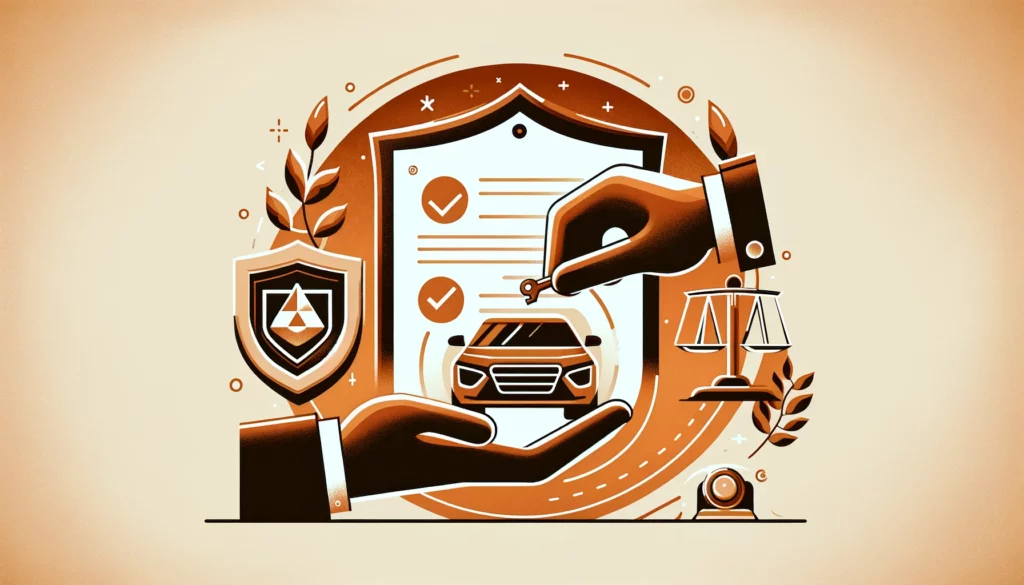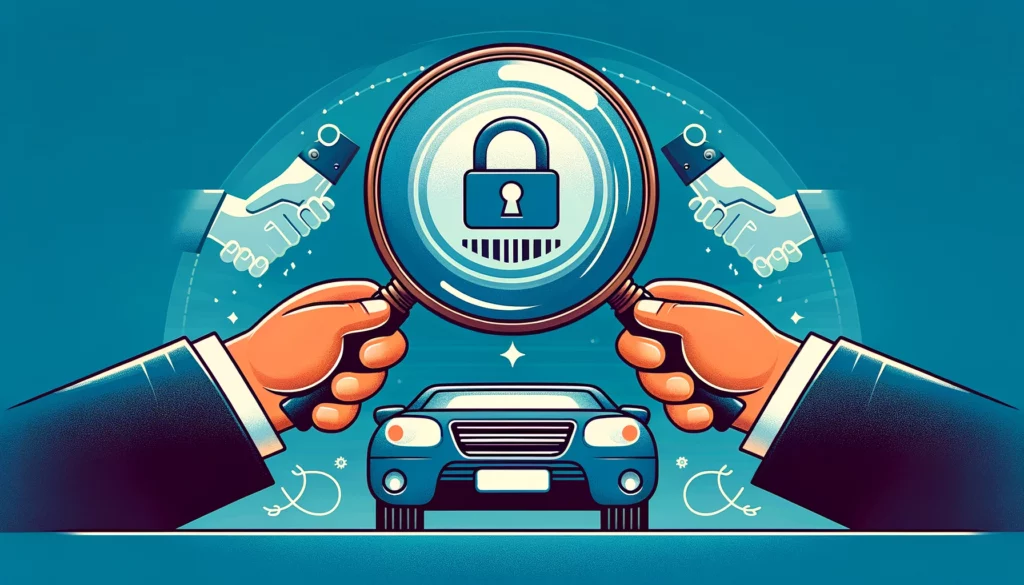Table of Contents
When considering the sale of your car, whether to a private individual or a dealership, a common question arises: Is it safe to give your Vehicle Identification Number (VIN) to a potential buyer? Yes, It is generally secure to share your car’s Vehicle Identification Number (VIN) under certain conditions. When selling your vehicle, either to a private buyer or a dealership, disclosing the VIN is typically considered safe. Understanding the significance of the VIN and its role in the selling process is crucial for making informed decisions.
The VIN, a unique identifier for each vehicle, is typically visible on the dashboard through the front windshield, making it accessible to anyone who takes a glance at your car. This exposure is especially true when your vehicle is parked in public areas. Consequently, the safety concerns surrounding sharing your VIN are minimal in most situations. It’s essential, however, to exercise caution and avoid including the VIN in online or print advertisements.
While the risk of personal data exposure through the VIN is limited, as most of this information is already accessible via public records, there is a notable concern: VIN cloning. This illegal practice involves attaching your car’s VIN to a stolen vehicle to make it appear legitimate, potentially implicating your vehicle in criminal activities.
In this article, we’ll delve into the purpose of the VIN, its role in the vehicle selling process, and the type of information it contains. This will help you understand the implications and safety measures to consider when sharing your VIN with potential buyers.
What Is VIN?
A Vehicle Identification Number (VIN) is a unique code, consisting of a 17-character combination of letters and numbers, assigned to every vehicle manufactured. This distinctive identifier encodes various details about the vehicle, including its make, model, engine type, and other specifications, much like a fingerprint uniquely identifies a person.
The VIN serves a crucial role in the automotive industry, aiding dealers, mechanics, and other professionals in accessing specific information about any vehicle through computerized systems. This information can include the vehicle’s history, maintenance records, and even details like the original paint color. In the absence of a VIN, modern systems may face challenges in identifying or processing information about a car, which could potentially hinder transactions such as selling a car, especially if it’s considered junk or salvage.
Reasons to Share Your VIN with a Buyer
Sharing your Vehicle Identification Number (VIN) with a potential used car buyer is a critical step in the car selling process. The VIN is more than just a serial number; it’s a gateway to a wealth of information about your vehicle. It allows the buyer to verify the car’s history, including any past accidents, service records, and ownership changes. This transparency builds trust, as it assures the buyer that the vehicle has not been stolen and that its history is not being concealed.

Moreover, the VIN enables car buyers to check for any recalls or manufacturer warranties that may still be applicable. It is also essential for insurance purposes, as insurers often require the VIN to provide accurate quotes and coverage options. This level of detail helps the buyer make an informed decision and can even facilitate a smoother transaction process.
In the digital age, where much of the car buying process can occur online, providing the VIN upfront can expedite the sale. It allows potential buyers to do their due diligence before they even view the car in person, saving time for both parties. Remember, the VIN is readily visible through the windshield of most vehicles, so sharing it does not significantly increase risk. Overall, sharing your VIN with a buyer is a gesture of good faith, demonstrating transparency and honesty in the sale of your vehicle.
A Guide to Finding Your Vehicle’s VIN
Locating the Vehicle Identification Number (VIN) on your car is a straightforward process, as it is typically placed in several easily accessible spots. The most common location is on the dashboard on the driver’s side, visible through the windshield. This placement allows anyone to view the VIN from outside the vehicle, making it an ideal spot for quick checks.
Another standard location for the VIN is on the driver’s side door frame, specifically on a label in the door jamb. When you open the driver’s side door, look for the VIN printed or stamped on a plate near where the door latches to the body of the car.
In addition to these locations, the VIN can also be found on various documents related to the vehicle. These include the car’s registration card, insurance documents, and the vehicle title. Checking these documents can be a convenient alternative if the VIN is not easily visible on the car itself. Remember, the VIN is essential for various purposes, from maintenance to selling the vehicle, so knowing where to find it is crucial for any car owner.
Each character in a Vehicle Identification Number (VIN) carries specific information, making it essential to understand the meaning behind these codes. The VIN’s first three characters represent the World Manufacturer Identifier, revealing the country of the vehicle’s production.
The following characters, from the 4th to the 8th position, provide details about the vehicle, including its body style, engine type, and airbag system. The 9th digit in the sequence is a check digit, used primarily by computer systems to validate the VIN’s authenticity.
The 10th digit indicates the model year of the car, providing a quick reference to its age. The 11th character identifies the manufacturing plant where the vehicle was assembled, giving insight into its production origin. Finally, the sequence from the 12th to the 17th digits are unique serial numbers, distinguishing each vehicle from others of the same make and model. Understanding these elements of the VIN can offer valuable insights into a vehicle’s identity and history.
Related article- How to Decode Your VIN
Used Car Value By VIN
When it comes to determining the used car value, whether you’re in the market to buy or sell, the VIN (Vehicle Identification Number) is an invaluable tool. Checking the car’s worth by VIN allows for a detailed and accurate assessment of its market value. This process involves evaluating various factors such as the car’s make and model, its current condition, mileage, accident history, and previous ownership, all of which significantly impact its worth.
Utilizing the VIN for this purpose offers a straightforward way to ascertain the car’s value. This unique identifier provides access to a comprehensive history of the vehicle, enabling both buyers and sellers to make well-informed decisions. For sellers, this means setting a price that accurately reflects the car’s condition and market standing. For buyers, it’s about ensuring they get a fair deal without overpaying.
In summary, when assessing a used car’s value, conducting a check of the car’s worth by VIN is a crucial step. It not only simplifies the valuation process but also adds a layer of transparency and confidence in the transaction, ensuring that the car value using VIN is reflective of its true market position.


